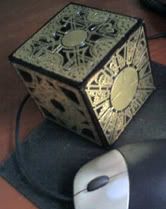Well, I'm back with a story I snagged off Wired Science entitled A Little Marijuana Helps, but Lots May Hurt. Interesting. Can I get a summary?
Summary
Hey, you know how all those people like cancer chicks and MS guys who say that weed makes 'em feel better? Let's do a test on it! We'll take the active "it burns!" chemical from hot peppers (and, subsequently, pepper spray) - capsaicin - inject it under their skin, and get 'em high. Then we'll ask them if it hurts. Dude? Dude.
Results
After 2 minutes, no one noticed any "It burns, oh, God it burns!" difference. After 45 minutes, those who had gotten "moderately" high said it hurt less. But those who got really high said it hurt more, even though they felt much "higher."
Problems
Honestly, I'm surprised this bar-closing brainstorm of an idea warranted any merit. Much of what we know about the benefits of marijuana is the relieving of chronic pain or reinstitution of appetite.
- New Stimulus
Shooting someone up with capsaicin is the physical equivalent of causing a hairline rib fracture. The problem with the way the experiment was handled was that it did not mimic one important aspect of the reason people - some of whom may never have smoked marijuana before - turn to using marijuana: unavoidable, chronic pain/nausea. The people in the study were completely healthy and introduced to a new stimulus - constant, burning pain. Then they smoked. If you're going to do a study to see if marijuana can "officially" help those with chronic pain, study people with chronic pain. - No External Stimulus
In my limited medical, partial psychological, and extensive marijuana experience, the symptoms that are known to be highly successfully ameliorated - chronic pain and lack of appetite - have one thing in common that can only be visualized or recorded if you put stoned people in front of the television: distractive stimulus.
In a word: stonervision. Get someone without an appetite stoned. Sit them in a comfortable chair and monitor them and ask them how stoned they feel and if they would like a cracker, they might feel uneasy and eat a cracker or two. Get that same person stoned, sit them in the same comfy chair, and flip on South Park Season 1 (play all), you don't even have to ask them; a subtly-placed bag of Nacho Cheese Bugles will simply disappear.
There are many more variables to consider; if you're going to test it, test it right.





No comments:
Post a Comment